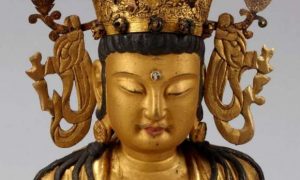
“Mindfulness” has become a buzzword in today’s world. Although rooted in ancient Buddhist meditation practices from more than 2,500 years ago, it is now widely presented as a non-religious skill supported by psychology and science. Mindfulness is used in various clinical settings, such as anxiety management and cancer treatment, to reduce mental and physical symptoms. It is also applied in non-clinical environments—such as parenting, classrooms, and workplaces—to improve productivity, manage stress, and enhance overall well-being.
In its modern, secular form, mindfulness is usually defined as paying attention to thoughts, feelings, and physical sensations in the present moment, and characterized by nonjudgmental observation and an attitude of acceptance. (Kabat-Zinn, Santorelli)
Key questions
This popularization of mindfulness raises important questions: Is the “mindfulness” we see in mainstream culture the same as the mindfulness taught in Buddhism? While secular mindfulness offers many benefits, could practicing it without its religious roots lead to misunderstandings or even harm?
On the other hand, Thích Nhất Hạnh’s interpretation of mindfulness adapts the traditional practice for application in both Buddhist and secular contexts, underscoring the novelty and uniqueness of his approach. What are the differences and similarities between his interpretations and traditional mindfulness practices? How does his approach fit into modern society?
To answer these questions, we first need to understand the original purpose and meaning of mindfulness as explained by the Buddha. This foundation will help us practice mindfulness correctly and get the most out of it.
The Buddhist roots of mindfulness
One of the earliest Buddhist texts crucial to mindfulness training is the Discourse on the Establishment of Mindfulness (Satipatṭhāna Sutta). According to this scripture, the Buddha taught that the goal of mindfulness is to end suffering and achieve Enlightenment (Pali: nibbāna), a state of lasting peace and happiness. (Bodhi) This is also the overarching goal of Buddhism, which Thích Nhất Hạnh describes as “a state of coolness, peace, and non-fear.” (Thích Nhất Hạnh 2017)
In fact, the Buddha said he taught only two things: suffering and how to end it. This means that despite the many doctrines and practices in Buddhism, they all serve one purpose: ending suffering by transforming how we see and experience life.
In Buddhism, “suffering” is a common translation of the Pāli term “dukkha.” However, dukkha is more than just physical pain or hardship. It refers to a deeper sense of dissatisfaction with life. The Buddha explained that life is full of dukkha because everything is temporary. (Anālayo) This includes not only birth, aging, sickness, and death, but also the experience of being separated from what we love, being stuck with what we dislike, and dealing with unfulfilled desires. (Mahinda)
Even joyful moments contain dukkha because they, too, do not last. (Dhammananda) However, the real issue is not that things are temporary; rather, it is our tendency to hold on to things, people, and experiences, expecting them to last forever. When things inevitably change, we feel pain and disappointment. In Buddhism, “suffering” comes from this misunderstanding of reality. (Thích Nhất Hạnh 2009)
The Buddha’s solution? A profound shift in how we see the world. We need to understand that everything is interconnected and constantly changing. Thích Nhất Hạnh calls this insight “interbeing,” meaning that nothing exists in isolation. When we realize this, we stop clinging to temporary things and move closer to freedom from suffering. I will explore this further in later articles.
Differences between Buddhist and secular mindfulness
At this point, it’s clear that Buddhist and secular mindfulness have very different goals. Secular mindfulness focuses on improving quality of life. It helps with physical and mental issues, boosts productivity, manages stress, and promotes well-being. In contrast, Buddhist mindfulness seeks the complete end of suffering. It aims to transform the way we see the world, cultivating insight into interconnectedness. This highlights the deeper spiritual and transformative aspects of mindfulness in its original Buddhist context.
The Discourse on the Establishment of Mindfulness explains how mindfulness is developed by contemplating the body (Pali: kaya), feelings (Pali: vedanā), mind (Pali: citta), and experiential phenomena (Pali: dhammās). Here, mindfulness is defined as present-moment awareness—a type of observation that is alert, non-reactive, receptive, equanimous, and detached. This prevents our mind from getting caught up in thoughts and emotions. (Anālayo)
As mentioned earlier, secular mindfulness often includes an accepting attitude, which can aid in the practice. However, in Buddhism, mindfulness itself is not about accepting or rejecting. Instead, it involves simply observing any acceptance or rejection that arises within the mind. (Mikulas)
Moreover, mindfulness is not practiced in isolation. The Discourse on the Establishment of Mindfulness indicates that mindfulness is always cultivated alongside three other mental qualities: clearly knowing (sampajāna), diligence (ātāpi), and freedom from desire and discontent (vinneya abhijjhādomanassa). (Anālayo)
Clearly knowing involves accurately perceiving what we observe, informed by mindful observation. While mindfulness can deepen this clarity, it is clearly knowing that leads to insight into the temporary and ever-changing nature of reality. This mental quality has the ability to remove negative mental states and nurture positive ones. Diligence refers to a balanced and persistent effort in our practice. The absence of desire and discontent, developed through practice, is seen as the skill of concentration. (Anālayo)
The Buddha emphasized that mindfulness alone, while beneficial, is not enough to eliminate negative mental states, such as ill will. It must be supported by other mental qualities to lead to genuine transformation. (Anālayo)
Conclusion
This article has explored the Buddhist origins of mindfulness and how it fits into the broader framework of the Buddha’s teachings. It has also examined the differences between Buddhist and secular mindfulness, showing that while both are valuable, they have different goals and approaches.
In the next article, I will look at the Four Noble Truths, the Buddha’s first teaching after his Enlightenment. I will focus especially on the fourth truth—the Noble Eightfold Path—where mindfulness plays an integral role. I will also discuss how practicing mindfulness without its religious roots could potentially lead to misunderstandings or even harm.
References
Kabat-Zinn, Jon. 2003. “Mindfulness‐based interventions in context: Past, present, and future.” In Clinical Psychology: Science and Practice, 10 (2), 144–56.
Santorelli, S. F. (Ed.). 2014. Mindfulness-Based Stress Reduction (MBSR) Standards of Practice. Worcester, MA: UMASS Medical School, Center for Mindfulness in Medicine, Health Care & Society.
Bodhi, Bhikkhu. 2011. “What does mindfulness really mean? A canonical perspective.” In Contemporary Buddhism, 12(01), 19–39.
Thích Nhất Hạnh. 2017. The Other Shore: A New Translation of the Heart Sutra with Commentaries. Berkeley, CA: Palm Leave Press.
Anālayo, Bhikkhu. 2006. Satipaṭṭhāna: The Direct Path to Realization. Penang: Inward Path Publisher.
Mahinda. 2013. “The true meaning of having an open mind.” In B. W. K. Liow (Ed.), One Dharma: Many Buddhist traditions: A festschrift in memory of K Sri Dhammananda (1919–2006) (pp. 81–93). Petaling Jaya: Buddhist Gem Fellowship.
Dhammananda, K. S. 2002. What Buddhists Believe (Expanded 4th edition). Malaysia: Buddhist Missionary Society.
Thích Nhất Hạnh. 2009. Happiness: Essential Mindfulness Practices. Berkeley, CA: Parallax Press.
Mikulas, W. 2011. Mindfulness: Significant Common Confusions. In Mindfulness, 2(1), 1–7.
Related features from BDG
Buddhist Mindfulness Versus Secular Mindfulness, Part 2
Buddhist Mindfulness Versus Secular Mindfulness, Part 3
Buddhist Mindfulness Versus Secular Mindfulness, Part 4












